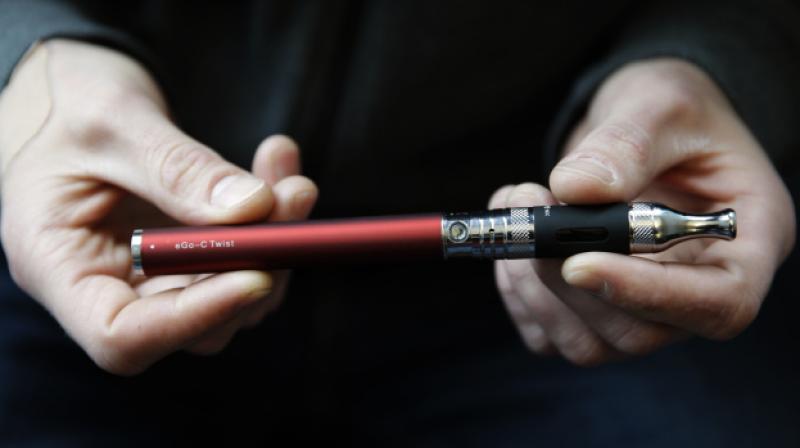Vaping may help pneumonia-causing bacteria invade airways, says study
Traditional cigarettes have been linked to increased risk of pneumonia, but it's been unclear whether e-cigarettes might have same effect.

People who smoke e-cigarettes might have an increased risk of developing pneumonia because the vapor could help bacteria stick to cells lining the airways, a small experiment suggests.
Traditional cigarettes have long been linked to an increased risk of pneumonia, but it’s been less clear whether e-cigarettes might have the same effect.
To find out, researchers did a series of laboratory experiments to see whether exposure to e-cigarette vapor might increase levels of a molecule produced by airway lining cells, called platelet-activating factor receptor (PAFR).
Pneumococcal bacteria use PAFR to help them adhere to airway cells.
First, the researchers exposed some human airway epithelial cells in culture dishes to e-cigarette vapor. Compared to cells that weren’t exposed, those that were had PAFR levels three times higher.
Then, they exposed mice to e-cigarette vapor and found higher PAFR production in the rodents who inhaled the fumes.
Finally, the researchers asked 17 people who were regular vapers to come smoke an e-cigarette in the lab. Compared with these participants’ PAFR levels measured before the vaping session, there was a three-fold increase in PAFR levels an hour after people smoked e-cigarettes.
“The take-home message is that it is over-optimistic to assume that all of the adverse effects of cigarette smoking are reduced by switching to vaping,” said senior study author Jonathan Grigg of Queen Mary University of London.
“It also raises the question that, even if we have not proved that vaping increases the risk of pneumonia, for young people taking up vaping for the first time, a precautionary approach would suggest that the risk should be assumed to exist until proved otherwise,” Grigg said by email.
Big US. tobacco companies are all developing e-cigarettes. The battery-powered gadgets feature a glowing tip and a heating element that turns liquid nicotine and flavorings into a cloud of vapor that users inhale.
Even when e-liquids don’t contain nicotine, the lungs are still exposed to flavoring chemicals when the e-liquids are heated and the vapors are inhaled.
Some previous research, mostly in lab experiments, has linked exposure to these flavorings to an increase in biomarkers for inflammation and tissue damage. This type of cell damage can lead to lung problems including fibrosis, chronic obstructive pulmonary disorder and asthma.
In the current lab experiment, PAFR levels surged in human nose lining cells in culture dishes exposed to e-liquids with nicotine and in cells exposed to nicotine-free vapor. This was accompanied by increased adhesion by pneumonia-causing bacteria.
Even though the study is small and the results must be verified in larger human trials, the findings still suggest that e-cigarettes aren’t risk-free and shouldn’t necessarily be considered a safe way for people to try to curb use of traditional cigarettes, the researchers conclude in the European Respiratory Journal.
At least when it comes to pneumonia, nicotine patches or gum may be a safer option for smoking cessation, the researchers note.
“PAFR expression is enhanced in cigarette smokers and patients with chronic obstructive pulmonary disorder and has been hypothesized to be mediating enhanced adhesion of bacteria to epithelial cells and subsequent development of pneumonia,” said Ilona Jaspers, deputy director of the Center for Environmental Medicine, Asthma & Lung Biology at the University of North Carolina at Chapel Hill.
“The data shown here suggest that vaping e-cigarettes could also increase expression of PAFR in relevant epithelial cells,” Jaspers, who wasn’t involved in the study, said by email. “In general, I would refrain from calling e-cigarettes ‘safer’ than cigarettes, but would suggest calling them causing ‘different’ effects than cigarettes.”

